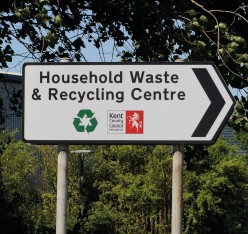 Kent County Council
Kent County Council
Opens: 6 September 2018
Closes: 1 November 2018
Introduction
Kent County Council (KCC) is seeking the views of service users, members of the public and other interested parties, on a proposal to charge for the disposal of non-household waste at the Household Waste Recycling Centres (HWRCs), sometimes known as the ‘tip’.
Non-household waste included in this consultation;
Soil, rubble and hardcore
Plasterboard
Even if originating from a domestic property, these materials are to be treated as non-household waste in accordance with the Controlled Waste Regulations 2012.
In recent years the amount of waste from household alterations and building works that is being brought to our HWRCs has increased. Furthermore, with neighbouring authorities adopting charging, this will have an impact on KCCs HWRCs with regards to cross border usage.
Therefore, we are proposing to introduce charges, which are in line with other councils, to recover the cost of dealing with these types of non-household waste, and continue to offer a disposal option. These charges are intended to help KCC achieve critical savings while still maintaining a comprehensive service for residents.
KCC is proud to have made significant progress in its environmental performance over the past 10 years. More than 99% of Kent’s household waste is now recycled, treated or recovered to produce energy, with less than 1% sent to landfill.
Have your say
Your participation in this consultation and views on this proposal are important and will help KCC to carefully consider options and inform any decision.
We recommend you read the consultation document which can be found in the ‘Documents’ section below. To take part in, please fill in the online questionnaire which is available by clicking on the link below.
This consultation closes on 1 November 2018.
Alternative formats: If you require any of the consultation material in an alternative format or language please email alternativeformats@kent.gov.uk or call 03000 421553 (text relay service number: 18001 03000 421553). This number goes to an answering machine, which is monitored during office hours.
Privacy: Kent County Council collects and processes personal information in order to provide a range of public services. Kent County Council respects the privacy of individuals and endeavours to ensure personal information is collected fairly, lawfully, and in compliance with the General Data Protection Regulation. To see a copy of our Privacy Notices please click here.
KCC recommend using Google Chrome if viewing and downloading consultation documents from mobile devices.
Respond
Details
| Consulting Organisation Type |
Kent County Council |
| Consulting Organisation Name |
Kent County Council |
| District / Borough areas affected by the consultation |
Ashford, Canterbury, Dartford, Dover, Gravesham, Maidstone, Medway, Sevenoaks, Shepway, Swale, Thanet, Tonbridge & Malling, Tunbridge Wells |
| Consultation Topic |
General interest, Recycling, rubbish and waste management |
| Consultation Methods |
Online survey / questionnaire / forms |
| Contact Details |
If you have any questions about the proposal, or require paper copies of any of the supporting documents, please contact: wastedisposalstrategy@kent.gov.uk or 03000 41 73 73 |
Kent County Council 06 September 2018
https://consultations.kent.gov.uk/consult.ti/wasteconsultation/consultationHome?


 The NHS in Kent and Medway has today published the preferred option for three new specialist ‘hyper acute stroke units’ to be introduced across the county. This is part of an ongoing review of urgent stroke services led by local doctors and other clinicians. The aim is to reorganise services so that specialist stroke staff can more consistently deliver high quality care around the clock, and in so doing reduce deaths and long-term disability from stroke for local people.
The NHS in Kent and Medway has today published the preferred option for three new specialist ‘hyper acute stroke units’ to be introduced across the county. This is part of an ongoing review of urgent stroke services led by local doctors and other clinicians. The aim is to reorganise services so that specialist stroke staff can more consistently deliver high quality care around the clock, and in so doing reduce deaths and long-term disability from stroke for local people.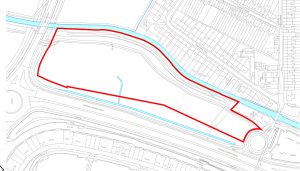
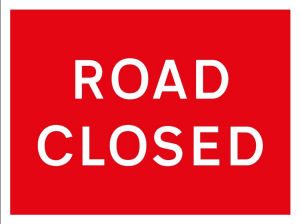 It will be necessary to close Beaver Road, Ashford from 19″” September 2018 for up to 1 day.
It will be necessary to close Beaver Road, Ashford from 19″” September 2018 for up to 1 day. It’s Gas Safety Week! Find out how to stay safe in your home with these top tips:
It’s Gas Safety Week! Find out how to stay safe in your home with these top tips: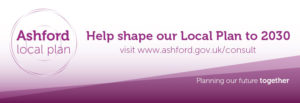 Ashford Borough Council
Ashford Borough Council Kent County Council
Kent County Council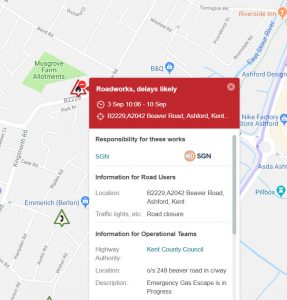 Beaver Road is closed close to the Junction with Norman Road to allow repairs to a leaking gas pipe
Beaver Road is closed close to the Junction with Norman Road to allow repairs to a leaking gas pipe